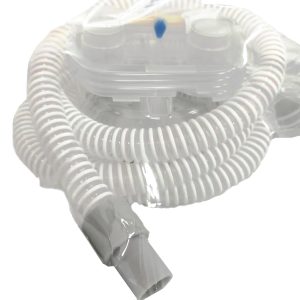Condensation in a CPAP hose can be bothersome and uncomfortable. Here’s how you can prevent it:
- Heated CPAP Tubing: Using heated CPAP tubing can effectively reduce the risk of condensation. This keeps the air temperature consistent as it travels through the hose, preventing it from cooling down and forming condensation
- Maintain a Straight Path: Ensure that the CPAP hose maintains a straight and unobstructed path. This reduces the likelihood of condensation buildup within the hose
- Hose Holder: Consider using a hose holder to keep the CPAP hose in place. This helps in maintaining a straight path and prevents kinking or bending that can lead to condensation.
- Room Temperature: Ensure that the room temperature is not too cold. A warmer room can help in maintaining the temperature of the air inside the hose, reducing the chances of condensation.
- Humidity Settings: Adjusting the humidity settings on your CPAP machine can also help. Some machines have built-in features to control humidity levels, which can prevent condensation from forming.
- Regular Maintenance: Clean and inspect your CPAP hose regularly. Any debris or blockages can disrupt the airflow, leading to temperature changes and condensation.
- Insulated Hose Covers: Consider using insulated hose covers. These covers can help in maintaining the temperature of the air inside the hose, reducing the risk of condensation.

By following these tips, you can effectively prevent condensation in your CPAP hose, ensuring a comfortable and uninterrupted sleep therapy experience.


